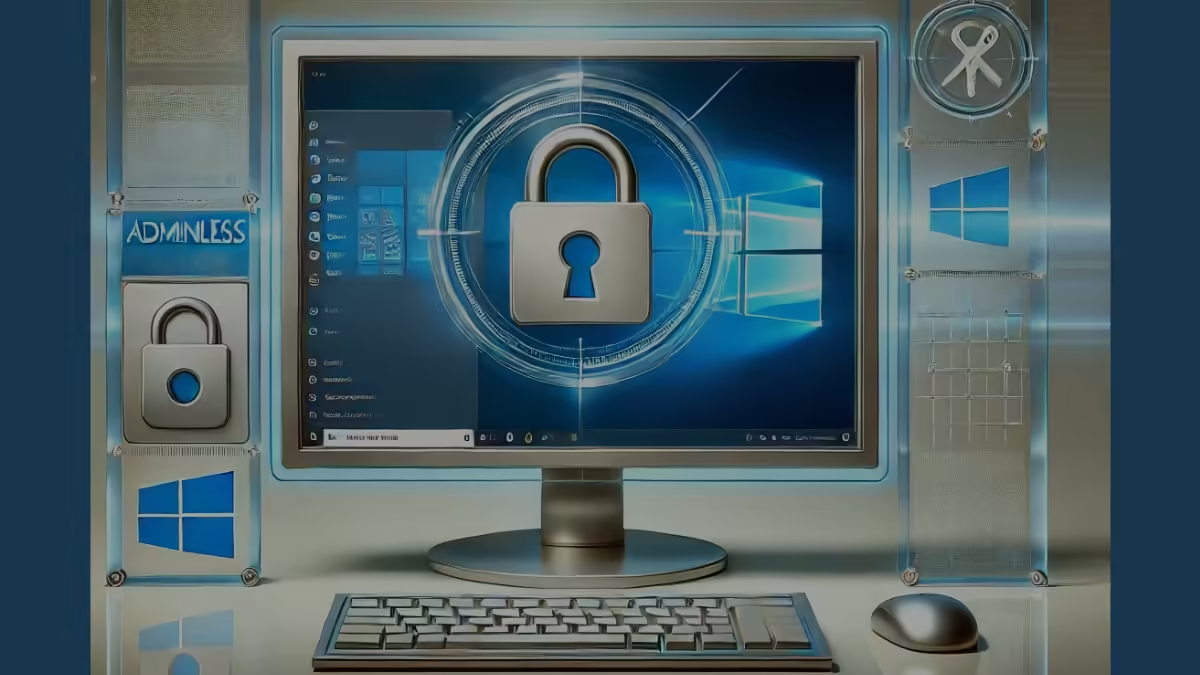Imagine a world where unknown apps and malicious scripts can’t exploit your administrator privileges, where your PC is more secure without sacrificing usability. Sounds like a tech utopia, right? Well, Microsoft is making this a reality with the upcoming “Adminless” Windows 11. Let’s unpack what this means for you and your PC.
Journey to Enhanced Security
Over the past few years, Microsoft has faced significant security challenges. Remember last year’s breach where Chinese hackers infiltrated Microsoft Exchange Online? They accessed emails from 22 U.S. government organizations, shaking national security to its core. The U.S. Cyber Safety Review Board didn’t hold back, criticizing Microsoft’s corporate culture for deprioritizing enterprise security investments and rigorous risk management.
In response, CEO Satya Nadella took a bold stand. In a company-wide memo, he declared, “If you’re faced with the tradeoff between security and another priority, your answer is clear: Do security.” This wasn’t just corporate lip service. In November 2023, Microsoft launched the Secure Future Initiative (SFI), marking a strategic pivot to prioritize security above all else.
But the path to security nirvana isn’t always smooth. In July 2024, a CrowdStrike update caused thousands of Windows systems worldwide to crash, leading to widespread chaos. This incident prompted Microsoft to reconsider allowing third-party security vendors to load drivers at the kernel level—a decision with profound security implications.
On the consumer side, the Recall fiasco further exposed vulnerabilities in Microsoft’s security model for AI features. The rollout was halted, and Microsoft had to overhaul the security framework, eventually allowing users to uninstall Recall completely.
Introducing Adminless Windows 11
Amidst these trials, Microsoft is making a groundbreaking move: introducing “Adminless” Windows 11 to protect personal PCs. The goal? Prevent unknown apps and malicious scripts from exploiting administrator privileges. David Weston, Microsoft’s VP of OS Security and Enterprise, enthusiastically stated, “This is the most impactful security feature to hit Windows in recent memory.”
So, what exactly is Adminless Windows 11?
Traditionally, Windows grants admin access to the first user account by default during installation—a practice that has persisted for years. While this access is somewhat guarded by the User Account Control (UAC) prompt, it still leaves room for exploitation.
The latest Windows 11 Insider Preview Build 27718 in the Canary channel introduces “Administrator Protection.” Currently disabled by default, users can enable it via Group Policy. When activated, it creates a hidden admin account and temporarily elevates your privileges through secure methods like PIN, fingerprint, or Windows Hello authentication. This means administrative privileges are granted only when needed, not constantly.
Steps to Enable Administration Protection Feature
Enabling the Administrator Protection feature was straightforward:
- Open the Group Policy Editor.
- Navigate to Computer Configuration > Windows Settings > Security Settings > Local Policies > Security Options.
- Find “User Account Control: Configure type of Admin Approval Mode” and set it to “Admin Approval Mode with Administrator protection.”
- Reboot your PC.
Once enabled, the changes were immediate. Installing a new program? Instead of the usual UAC prompt, you’ll be asked to enter a PIN. Opening system tools like Task Manager or the Registry Editor also required secure authentication. No more free passes!
Interestingly, when you run Command Prompt as an administrator, it now shows that it is operating under a newly created admin account with elevated rights, separate from your main user account. This separation adds an extra layer of security by ensuring full admin rights aren’t tied directly to your everyday account.
Yes, it adds an extra step here and there, but it’s a small price to pay for enhanced security.
Why This Matters
The move towards an adminless environment brings Windows in line with other operating systems like macOS and Linux, which have long offered sudo-less or root-less environments by default. By limiting constant admin access, Microsoft reduces the risk of unauthorized changes and potential security breaches.
This change reflects a broader shift in Microsoft’s approach to security. It’s not just about patching vulnerabilities after the fact but proactively designing the system to minimize risks from the get-go.
Looking Ahead
Microsoft’s introduction of Adminless Windows 11 is a significant step forward in personal PC security. By rethinking how administrative privileges are managed, they’re making it harder for malicious software to gain a foothold while keeping the user experience smooth.
It also shows Microsoft’s commitment to putting user security front and center. While we await more details at the upcoming Microsoft Ignite event, one thing is clear: the future of Windows is more secure, and that’s something we can all look forward to.
So, next time you’re prompted to enter your PIN instead of breezing through a UAC prompt, remember—it’s a small step for you, but a giant leap for your PC’s security.
